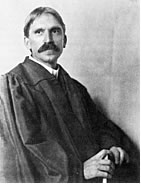 John Dewey is thought to be the founder of reflection as it relates to personal learning. Dewey highlighted that reflection in a learning context is not just a passive recall of an event. Reflection is a deliberate and active process. It is about thinking to learn. In Dewey’s words it is an “active, persistent and careful consideration of any belief or supposed form of knowledge in the light of the grounds that support it, and further conclusions to which it leads” (Dewey 1933 pg. 118).
John Dewey is thought to be the founder of reflection as it relates to personal learning. Dewey highlighted that reflection in a learning context is not just a passive recall of an event. Reflection is a deliberate and active process. It is about thinking to learn. In Dewey’s words it is an “active, persistent and careful consideration of any belief or supposed form of knowledge in the light of the grounds that support it, and further conclusions to which it leads” (Dewey 1933 pg. 118).
Dewey believed that reflection could be really useful for making sense of situations or events that we found puzzling or hard to explain. He suggested that reflection for learning should include recalling the event and then posing questions to explore why things turned out the way they did and what possible actions could have given a different outcome.
Since Dewey’s initial work a variety of models have been proposed to capture the components of reflection within learning.
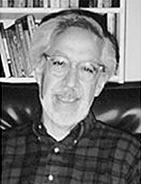 Schön built on Dewey’s work and linked reflection more solidly to professional development and professional practice. Schön claimed that by using reflection, practitioners can make explicit, hidden (tacit) knowledge. This knowledge is the theory that underpins what practitioners do often by instinct. Further, this new understanding can help practitioners improve their practice and become increasingly expert at what they do.
Schön built on Dewey’s work and linked reflection more solidly to professional development and professional practice. Schön claimed that by using reflection, practitioners can make explicit, hidden (tacit) knowledge. This knowledge is the theory that underpins what practitioners do often by instinct. Further, this new understanding can help practitioners improve their practice and become increasingly expert at what they do.
Schön identified two types of reflection: reflection on action, which is undertaken retrospectively, and reflection in action, which is essentially ‘thinking on your feet’. He also proposed that by repeatedly carrying out the process of ‘reflecting on action’ can help practitioners to build upon previous experiences and scenarios. This leads to the creation an extensive repertoire of rehearsed interventions. When new or unexpected situations occur in practice, this repertoire enables the expert practitioner to respond rapidly and instinctively in an appropriate manner.
 Kolb and Fry (1975) looked at the constituent parts of reflection and from these, created a learning cycle framework. Kolb identified four parts to the learning cycle. To make Kolb’s model more understandable, Pedler, Burgoyne and Boydell (2001) simplified the terminology.
Kolb and Fry (1975) looked at the constituent parts of reflection and from these, created a learning cycle framework. Kolb identified four parts to the learning cycle. To make Kolb’s model more understandable, Pedler, Burgoyne and Boydell (2001) simplified the terminology.
Kolb highlights an important point. Individuals tend to have a preference for carrying out one part of the learning cycle over the others. For example, theorising in the 'abstract conceptualisation' or the 'so what' in Pedler’s model.
In many cases this is not problematic, so long as a level of skill is maintained in the other areas. However, if an individual develops a very strong preference for one part of the cycle, then they may neglect and become deskilled in the other areas. This can cause the subsequent learning to become skewed and unbalanced. Therefore, maintaining a level of competence in all parts of the learning cycle is essential to ensure comprehensive learning.
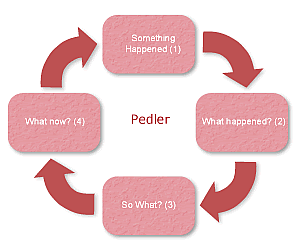
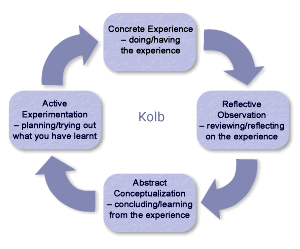
Click on the links to see a larger version of the models in a new window: Kolb and Pedler
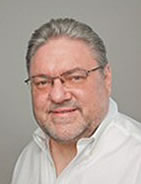 Both Schön and, in the main, Dewey tend to ignore the effect of emotions when considering reflection. Schön’s theory is seen as being more concerned with professional practice and the development of the expert practitioner. Kolb’s theory has also been criticised as being too theoretical and not acknowledging the effect of feelings.
Both Schön and, in the main, Dewey tend to ignore the effect of emotions when considering reflection. Schön’s theory is seen as being more concerned with professional practice and the development of the expert practitioner. Kolb’s theory has also been criticised as being too theoretical and not acknowledging the effect of feelings.
Boud, Keogh and Walker (1985) challenge this assumption. They assert that for reflection to be a valid way of learning, the emotions that are associated with event must be taken into account (e.g. fear, panic hesitation, calm or elation). They also highlighted that emotions can influence the way in which the individuals recall events. Strong emotions may skew the way events are interpreted or indeed what part of an event is concentrated upon during reflection. By ignoring the impact of emotion, learning from reflection may be an incomplete process.